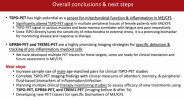Jonathan Edwards
Senior Member (Voting Rights)
But it appears to me that where the signals are strongest correspond quite well with our lymphatic system,
I guess the green on that diagram is lymphatics and nodes. That does not coincide with cervical spine or quads. I have not seen the PET images so it is hard to say what they suggest.

